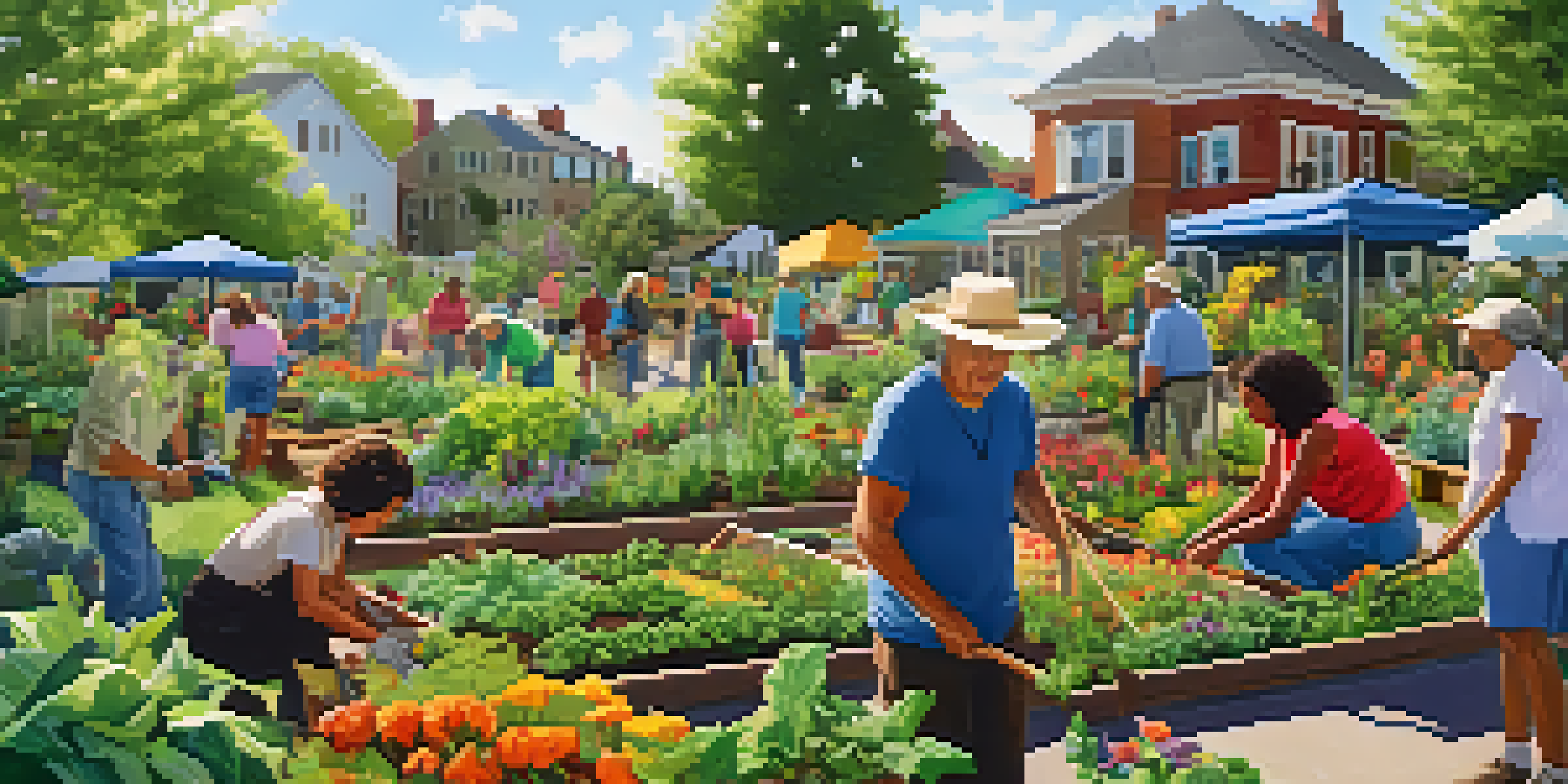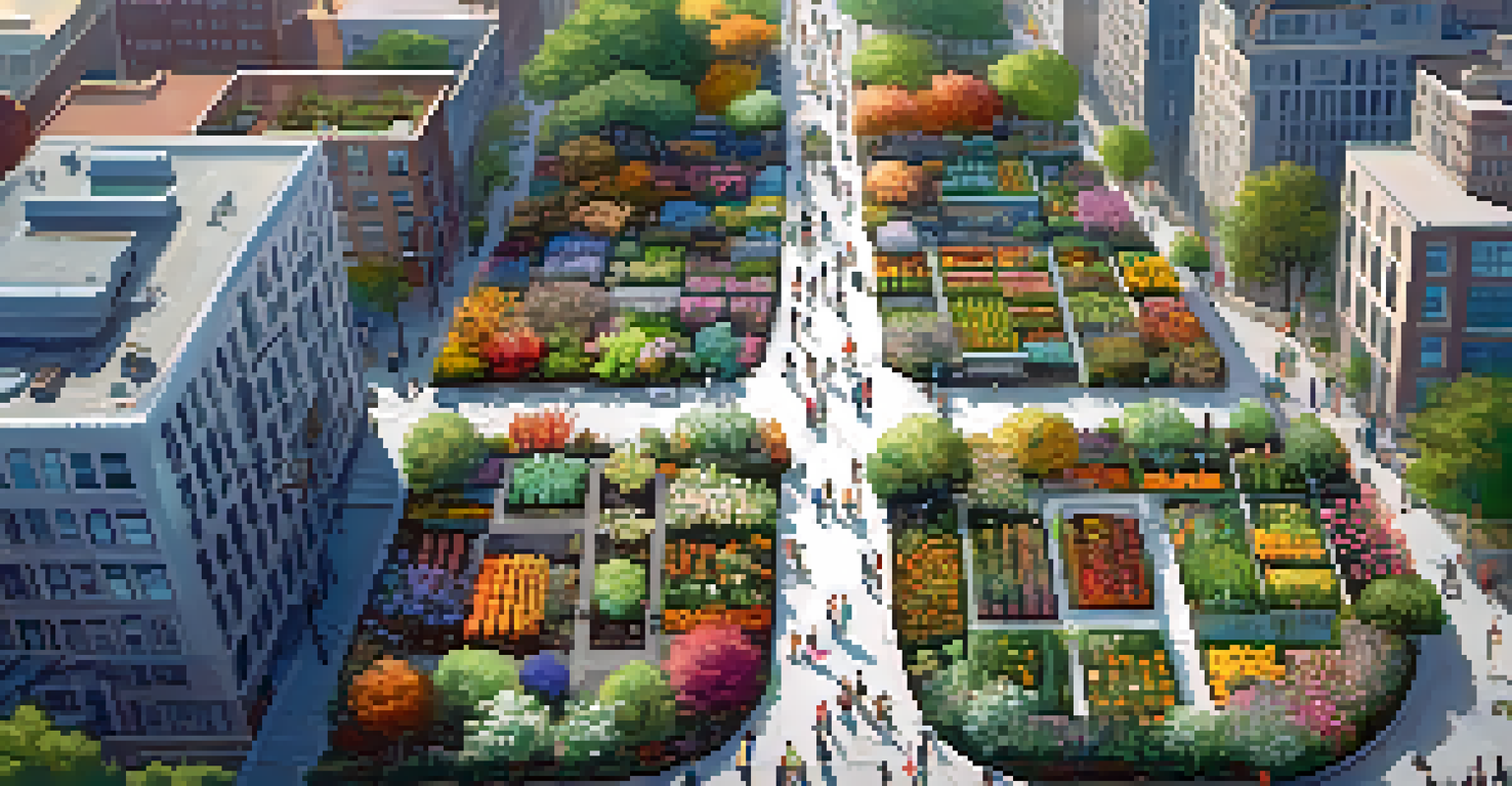Community Gardens: Building Green Spaces in Urban Areas

What Are Community Gardens and Their Purpose?
Community gardens are shared plots of land where individuals or groups cultivate plants, flowers, and even vegetables. They serve as a space for community members to come together, promote sustainability, and grow their own food. These gardens can transform vacant lots into vibrant green spaces that enrich urban environments.
Community gardens are a way to bring people together, build community, and create a sense of belonging.
The primary purpose of community gardens is to foster community engagement and cooperation. They bring people from diverse backgrounds together, encouraging collaboration and interaction. This shared experience not only cultivates plants but also friendships and a sense of belonging among neighbors.
Additionally, community gardens contribute to food security by providing fresh produce to urban dwellers. In areas where access to groceries may be limited, these gardens can offer a sustainable source of fruits and vegetables. Thus, they play a vital role in promoting healthier lifestyles in cities.
Benefits of Community Gardens for Urban Communities
Community gardens offer a plethora of benefits that extend beyond just growing food. They enhance the aesthetic appeal of neighborhoods, making them greener and more inviting. A vibrant garden can turn an otherwise neglected space into a local attraction, boosting community pride.

Moreover, these gardens play a crucial role in improving mental health. Gardening has been shown to reduce stress, promote mindfulness, and foster a sense of accomplishment. For many, spending time in these green spaces provides a much-needed escape from the hustle and bustle of urban life.
Community Gardens Foster Unity
These shared spaces encourage collaboration and friendships among diverse community members.
Finally, community gardens help to educate individuals about sustainable practices and environmental stewardship. Workshops and events often take place in these spaces, teaching gardening techniques, composting, and the importance of biodiversity. This knowledge empowers community members to make environmentally conscious decisions.
How Community Gardens Foster Social Connections
One of the most remarkable aspects of community gardens is their ability to bring people together. In urban settings, where isolation can be common, these gardens create a sense of community. Residents work side by side, sharing gardening tips and stories, which fosters lasting relationships.
Gardening adds years to your life and life to your years.
These gardens often serve as gathering places for community events, such as potlucks or harvest festivals. Such activities not only strengthen bonds between neighbors but also promote cultural exchange, as individuals share their unique gardening practices and recipes. In essence, these gardens become melting pots of culture and creativity.
Additionally, community gardens can empower marginalized groups by giving them a platform to voice their needs and concerns. They encourage participation in local governance and inspire collaborative projects that address community issues. This collective effort can lead to meaningful change in urban neighborhoods.
Environmental Impact of Community Gardens
Community gardens significantly contribute to urban biodiversity, creating habitats for various species. By transforming concrete jungles into lush green spaces, they support pollinators like bees and butterflies. This increased biodiversity is crucial for maintaining healthy ecosystems in urban areas.
Furthermore, these gardens help mitigate the urban heat island effect, where city temperatures can be higher than surrounding areas due to concrete and asphalt. The greenery in community gardens cools the environment, making neighborhoods more comfortable during hot summer months. This thermal regulation is vital for the well-being of residents.
Health and Sustainability Benefits
Community gardens enhance food security and promote healthier lifestyles while educating residents on sustainable practices.
Lastly, community gardens promote sustainable practices like composting and organic gardening. By encouraging these methods, they help reduce waste and minimize the use of harmful pesticides. This shift towards sustainability is essential for creating healthier urban spaces for future generations.
Challenges Facing Community Gardens
Despite their many benefits, community gardens face several challenges. One significant issue is the availability of land, as urban areas continue to develop and compete for space. Securing long-term leases or ownership can be a complex and daunting task for community groups.
Additionally, funding can be a significant hurdle. While some gardens receive grants or donations, many rely on volunteers and community contributions. Without consistent financial support, maintaining gardens can become difficult, leading to neglect and disrepair.
Lastly, community gardens may face resistance from local authorities or developers who prioritize commercial projects over green spaces. Navigating zoning laws and advocating for the importance of these gardens can be time-consuming and frustrating. However, many communities are finding creative solutions to overcome these obstacles.
Steps to Start Your Own Community Garden
Starting a community garden may seem daunting, but it can be a rewarding endeavor. The first step is to gather interested community members and establish a group. This collective effort ensures that various voices are heard, fostering a sense of ownership and commitment among participants.
Next, it's essential to find a suitable piece of land. This may involve reaching out to local government, schools, or private landowners for potential plots. Once a location is secured, the group can begin planning the garden layout, selecting plants, and organizing resources.
Overcoming Urban Challenges
Despite facing land availability and funding hurdles, communities are finding creative solutions to sustain these green spaces.
Finally, obtaining necessary permits and funding is crucial. Many local governments offer grants for community projects, and fundraising efforts can help cover costs. With determination and collaboration, your community garden can thrive and become a cherished green space in your neighborhood.
Inspiring Examples of Successful Community Gardens
Across the globe, numerous community gardens serve as inspiring examples of what can be achieved through collaboration. For instance, the Incredible Edible movement in Todmorden, England, encourages residents to grow food in public spaces. This initiative has not only provided fresh produce but has also fostered a strong sense of community spirit.
In New York City, the Horticultural Society of New York has been instrumental in creating and supporting community gardens in underserved neighborhoods. These gardens not only beautify the city but also provide educational programs and fresh food to local families. Their success highlights the transformative power of community gardening.

Closer to home, many cities across the United States have implemented successful community gardening programs that address food deserts. These gardens not only supply fresh produce but also engage residents in sustainable practices, showing that with passion and teamwork, urban areas can become greener and more connected.